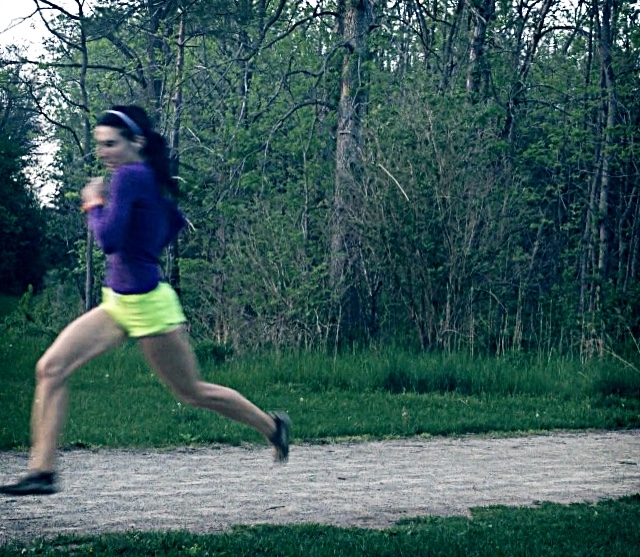When you run with a forefoot strike, you’ll feel the urge to naturally run faster, which is great because faster is always better! But what are the exact techniques to run faster? It turns out that you don’t need to move your legs more rapidly, but rather you must generate greater support forces (Weyand et al. 2000).

Techniques to Run Faster When Forefoot Running
When compared with heel strike running, forefoot running results in higher cadence and of course, faster runners are usually non-heel strike runners. However, would purposely increasing cadence make a forefoot runner faster?
Weyand et al. (2000) favors a different explanation regarding running speed: since runners can only use high cadence to a limited extent, other changes in mechanics produce faster top running speeds, too.
The researchers wanted to see if applying greater support forces to the ground, rather than increasing cadence, would result in faster top running speeds.
As expected, faster runners had higher cadence and less ground contact time as compared with slower runners, but faster runners applied more force during the support phase.
- The researchers argued that a reduction in ground contact time was the result of greater support forces applied by faster runners. Does this indicate that the faster runners pushed off the ground? Not necessarily.
Body Propelled by Trunk Posture
Trunk posture may affect the magnitude of support forces during running. For instance, a forward position of the center of mass was in-phase with fluctuations in gravitational potential energy (Cavagna et al. 1964).
In addition, a forward position of the center of mass adds mass to the leg-spring complex and may exert greater support forces between the foot and the ground. In either case, elastic energy storage in the muscles, tendons and ligaments is more favorable and allows the foot to burst off the ground, indicating that aggressive push-off is needless.
Aside from cadence, trunk posture may contribute more to faster top running speeds than we think. In this regard, the researchers hinted that other mechanical factors indeed lead to faster top running speeds and not just through increased cadence.
The researchers found that the slowest runner, with a top speed of 6.2m/s, repositioned the leg for the next step as rapidly as the fastest 100-m sprinter in the world, but the runner only ran half as fast. Therefore, faster top running speeds are not always characterized by higher cadence. Varied acceleration is also evoked by differing mechanical mechanisms that extend beyond rapid changes in leg movement.
More From Run Forefoot:
Zero-Drop Shoes May Prevent Falls in Older Runners
Comparing Heel Strike vs Forefoot Strike
Running with Cold Feet Harmless, to an Extent
Forefoot Running Footwear Reviews
References:
Cavagna, G. A., Saibene, F. P. and Margaria, R. (1964). Mechanical work in running. J. Appl. Physiol. 19, 249-256.
Weyand et al. Faster top running speeds are achieved with greater ground forces not more rapid leg movements. J Appl Physio, 2000; 81:1990-1999.
Bretta Riches
BSc Neurobiology; MSc Biomechanics candidate, ultra minimalist runner & founder of RunForefoot. I was a heel striker, always injured. I was inspired by the great Tirunesh Dibaba to try forefoot running. Now, I'm injury free. This is why I launched Run Forefoot, to advocate the health & performance benefits of forefoot running and to raise awareness on the dangers of heel striking, because the world needs to know.
Latest posts by Bretta Riches (see all)
- Can You Run In Barefoot Shoes? Yes, But DON’T Heel Strike! - 21/07/2024
- Why Cushioned Running Shoes Are Really Bad for Your Feet - 19/07/2024
- Do Cushioned Running Shoes Cause Injuries? - 17/07/2024

Leave a Reply